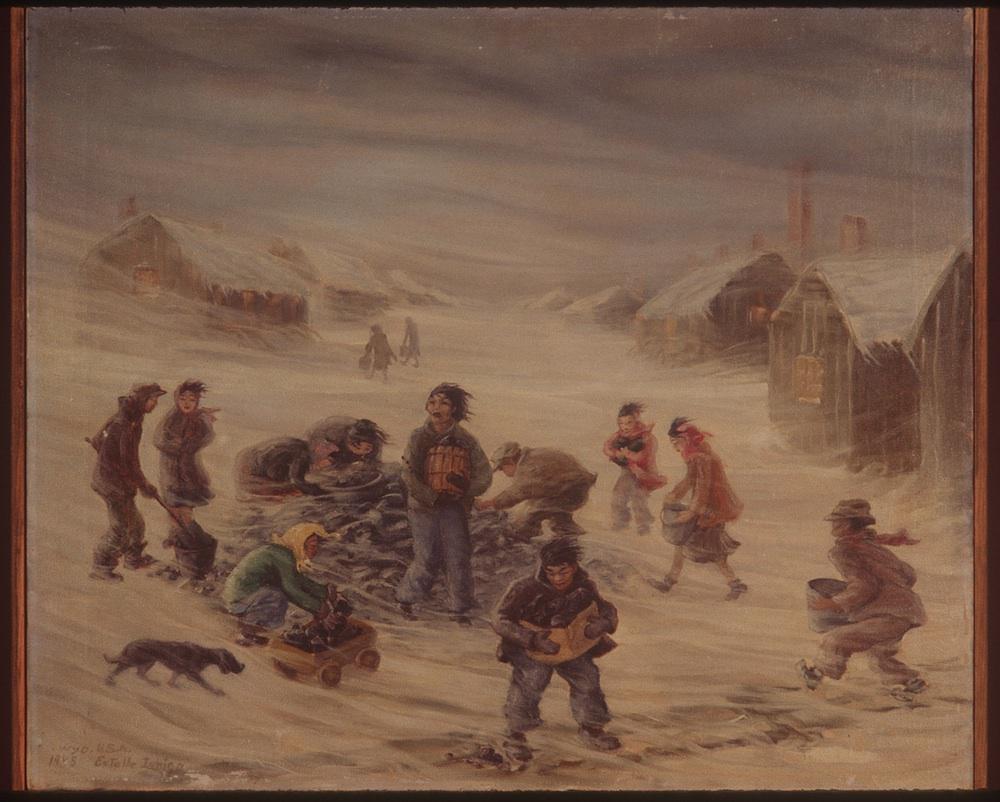Estelle Peck, a white Californian, married Arthur Ishigo, a second-generation Japanese American, in 1929. Interracial marriages were illegal in the state at the time, so the two went to Mexico to marry; Estelle’s family disowned her for the act. When California’s Japanese Americans were sent to internment camps in 1942, Estelle Peck Ishigo, who had been working as an art teacher, joined them voluntarily. Estelle and Arthur spent the war at Pomona Assembly Center, in California, and then the Heart Mountain Relocation Center, in northern Wyoming.
The War Relocation Authority commissioned Ishigo to sketch life inside the camps, but she didn’t hold back from critique when depicting conditions at Heart Mountain. Though there is a sense of community togetherness in the images—baseball games, patriotic decorations put up for Memorial Day—Ishigo’s drawings and paintings always contain some reminder, small or looming, of the camp’s essential nature. Adorable boys in one painting work to free a kite from a snag on a barbed-wire fence; people gathering coal, in another, seem barely dressed for the Wyoming weather.
The last few paintings below depict the camps in Southern California where Estelle and Arthur lived after the war, working in fish canneries while trying to find permanent work again. Arthur died in 1957, and Estelle lived, largely in poverty, until 1991.
I first saw Ishigo’s drawings and paintings of life in Heart Mountain in the online archive Calisphere, where they were posted by the department of Special Collections at the University of California, Los Angeles’ Charles E. Young Research Library. More Estelle Ishigo art from Heart Mountain can be seen online at the website of the Japanese American National Museum.
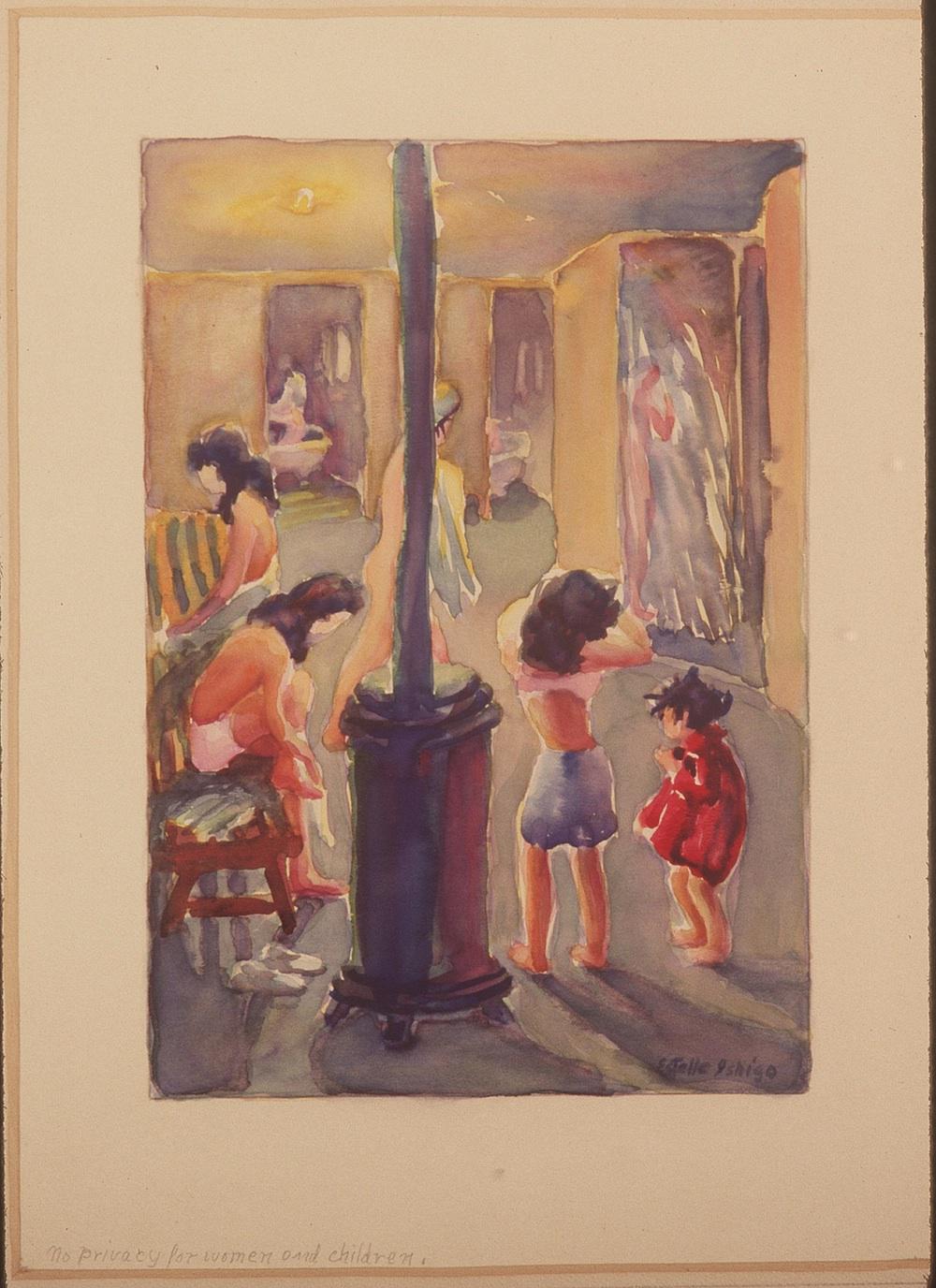
Department of Special Collections/UCLA Library
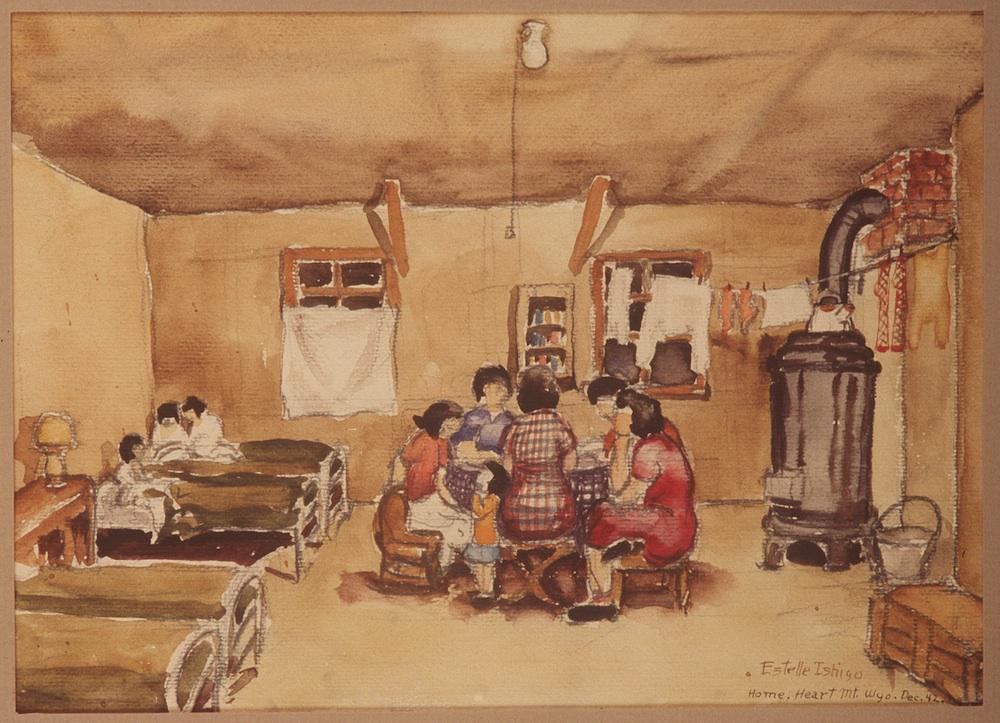
Department of Special Collections/UCLA Library
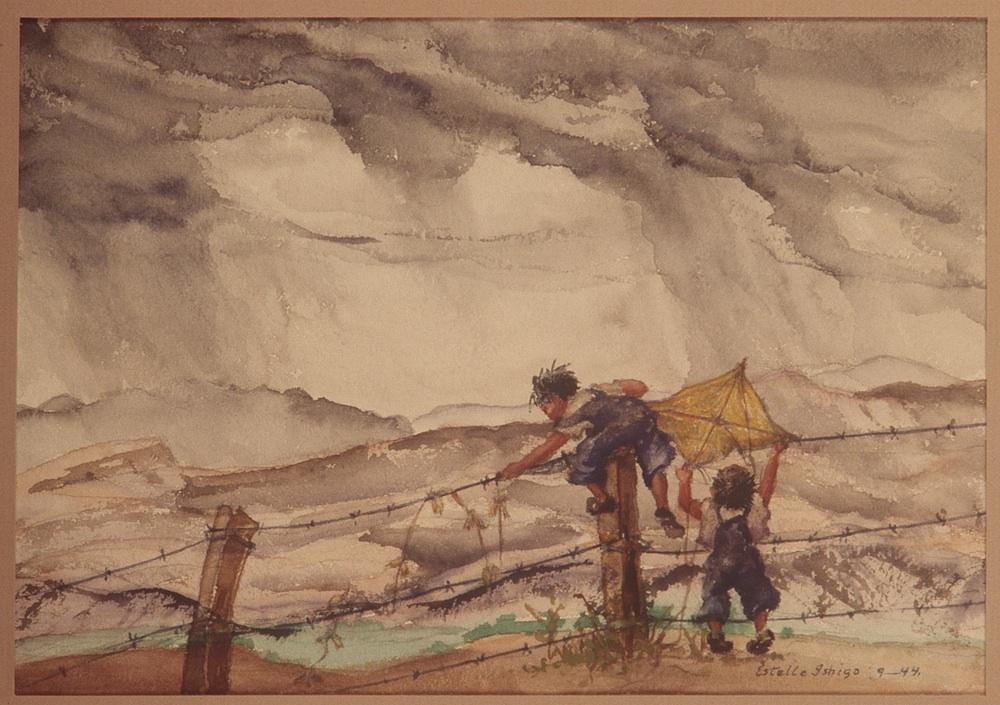
Department of Special Collections/UCLA Library
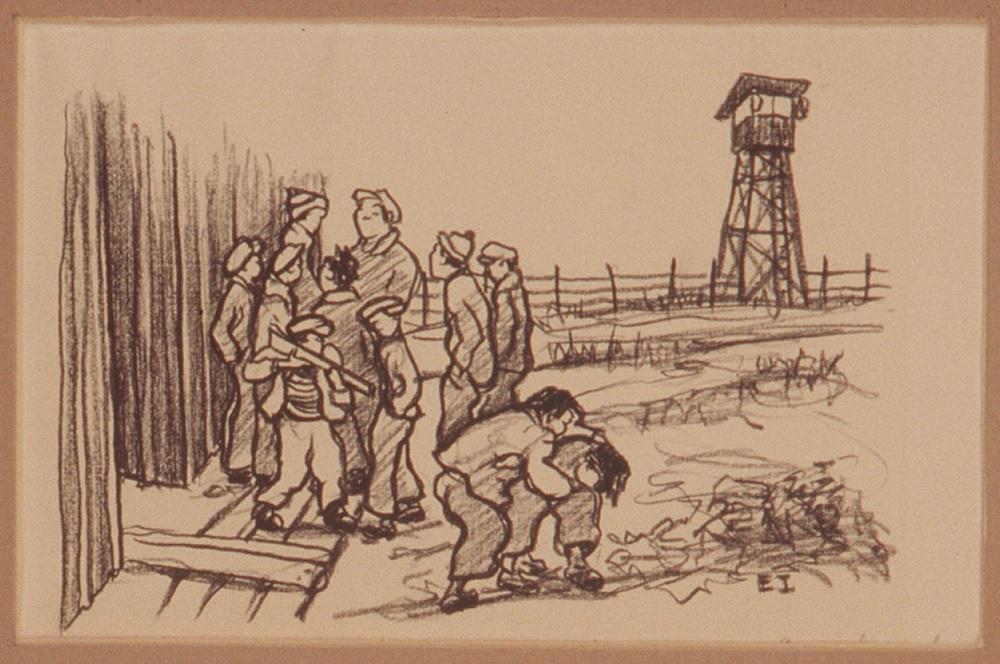
Department of Special Collections/UCLA Library
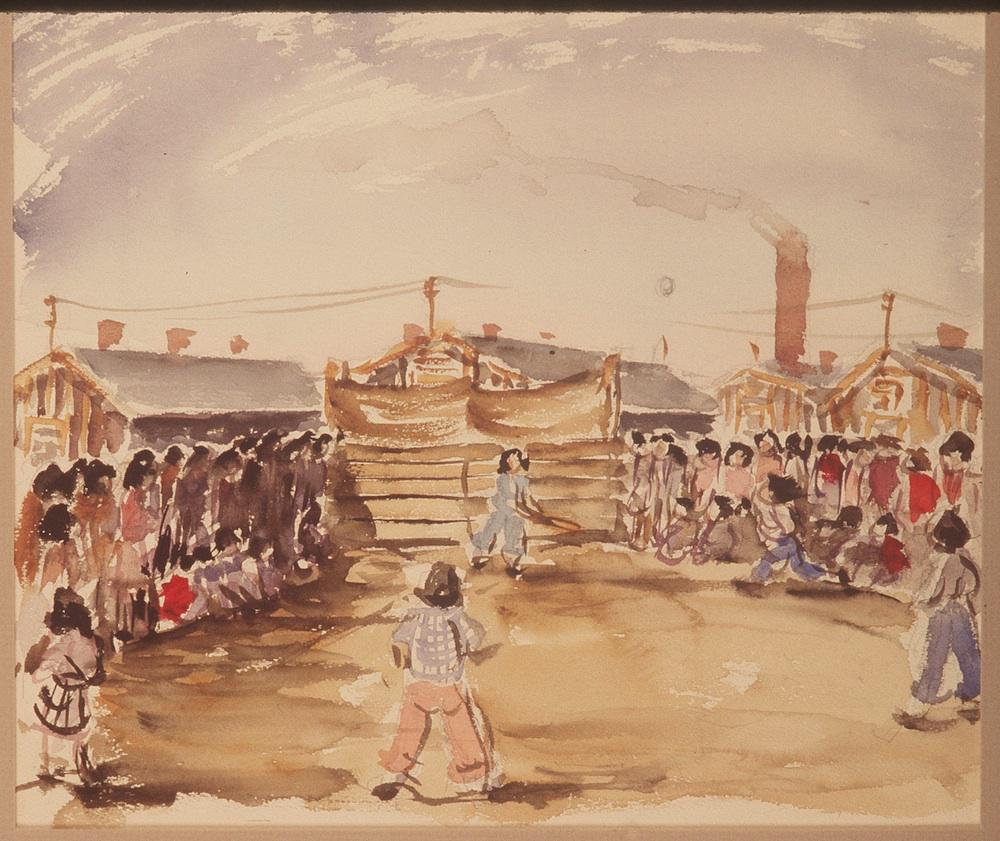
Department of Special Collections/UCLA Library
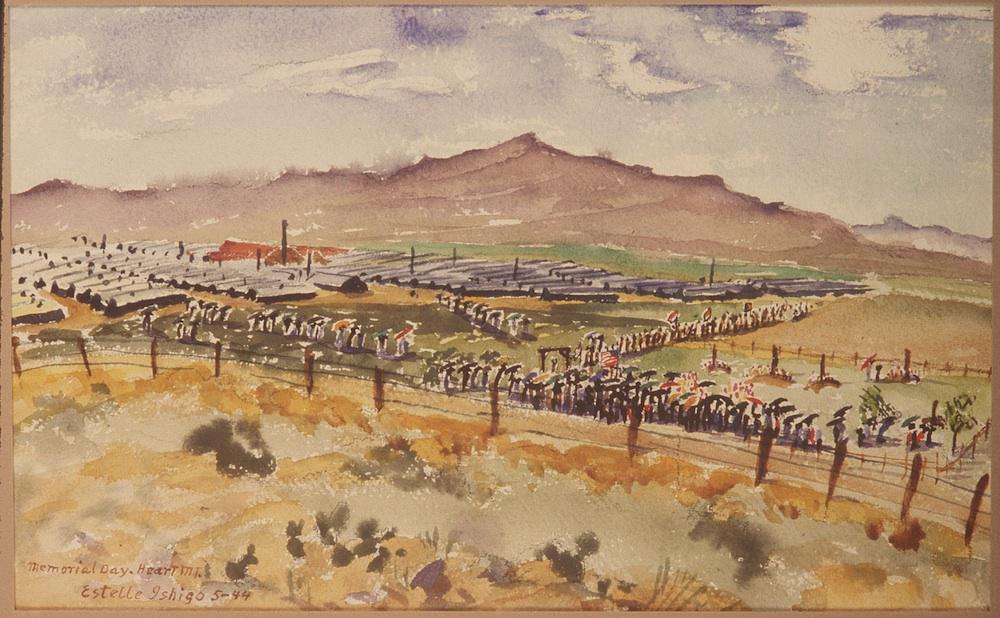
Department of Special Collections/UCLA Library
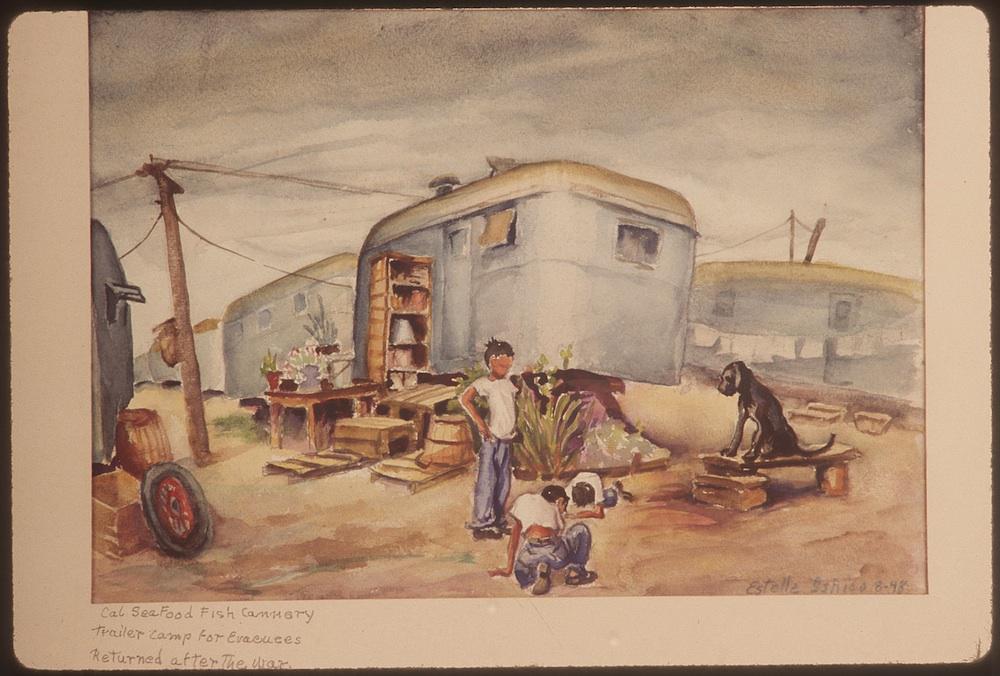
Department of Special Collections/UCLA Library
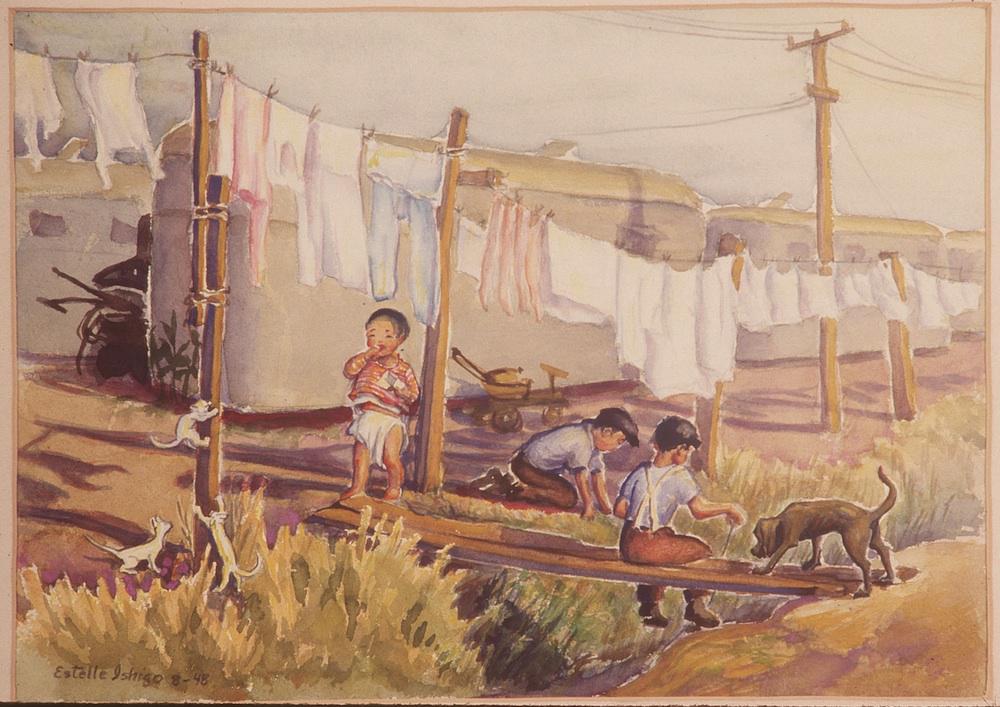
Department of Special Collections/UCLA Library
